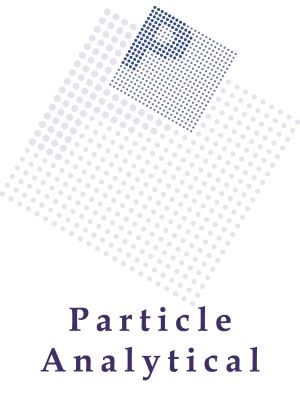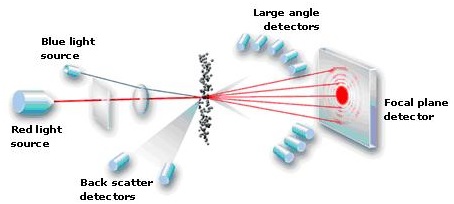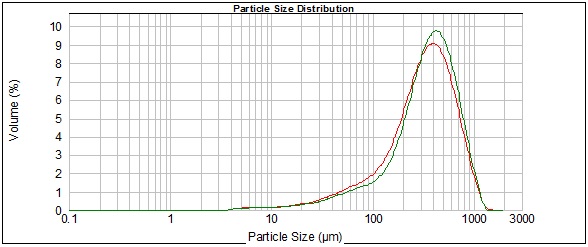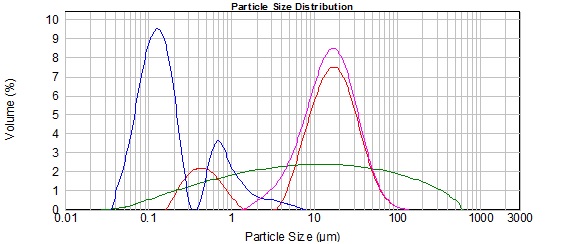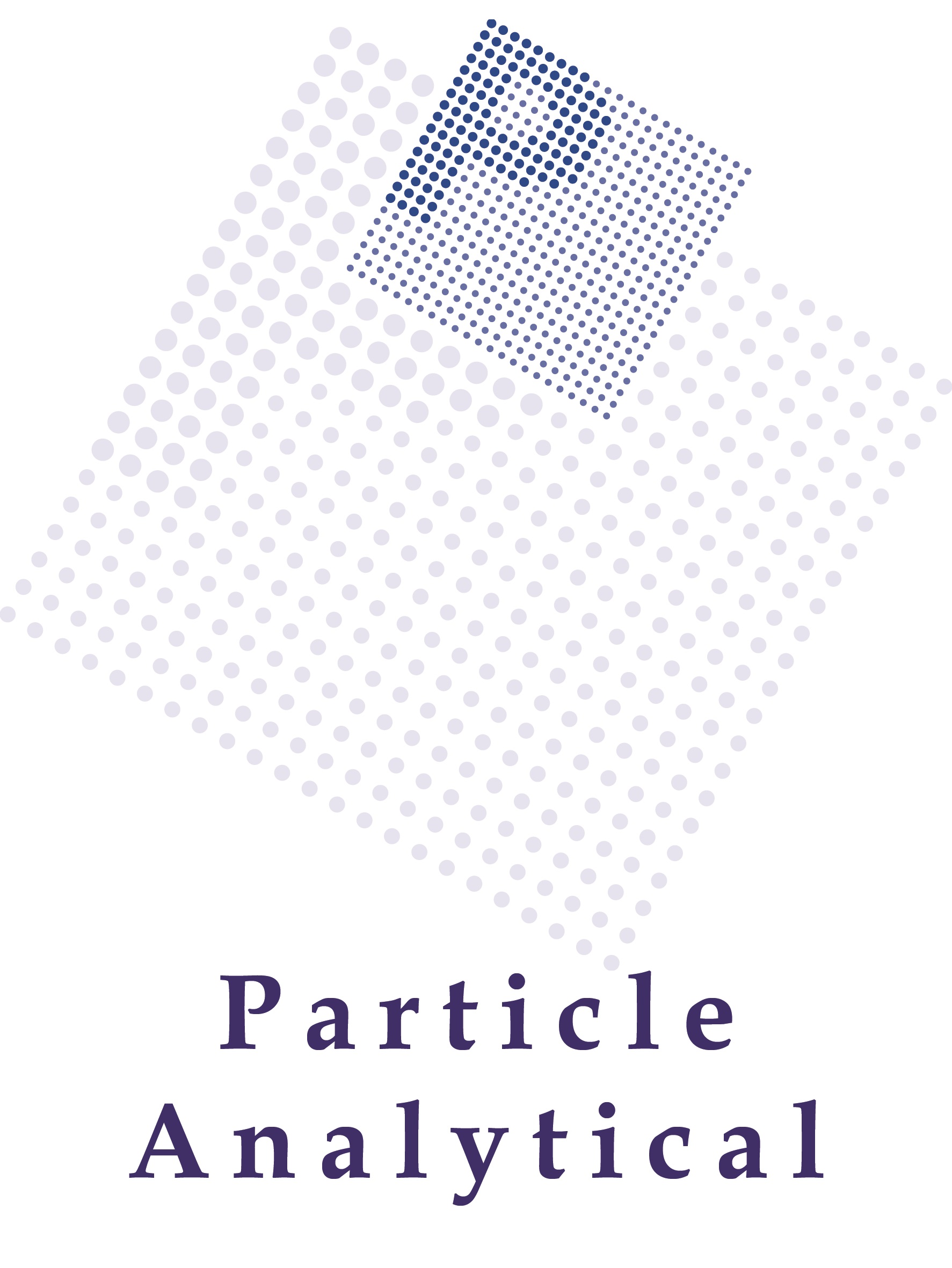By Particle Analytical…
Laser diffraction
By laser diffraction analysis it is possible to measure particles size distribution for particles in the size region between <1 µm to around 3 mm for a very large number of particles. Various equipment exists (e.g. Malvern and Sympatec). For all laser diffraction instruments the overall principle is to disperse the powder sample in either air or a suitable liquid media and expose it to a laser beam. The diffracted light is detected and translated into a particle size distribution. It should be highlighted that the results from different equipment cannot be directly compared, as variations in the measurement principles will lead to different results.
Laser diffraction is known to be a very robust method – but some dangerous pitfalls exist: By laser diffraction you do not obtain a direct measurement of the particles: The signals from the measurement is “translated” into a particle size by different calculation methods, assuming that the particles are spherical which might be far from true.
Further, the particles are mechanically affected during measurement: The particles will be exposed to pressure, stirring etc. – thus during validation, it should be very carefully studied that this mechanical treatment does not alter the particles. This subject will be discussed in more detail under the section about method validation.
Models for determination of particle size distribution
The translation of the laser scattering pattern is based on either Fraunhofer or Mie theory. In the Fraunhofer model it is assumed that the particles interacting with the laser beam are spherical and that the laser light does not “enter” the particles (i.e. the particles are not transparent) – both assumptions are not true, but in in most cases the model has shown to give valid results. The Mie theory also assumes spherical particles, but further it is taken into account that the particles are transparent and absorbs part of the light. Thus, this model is theoretically more correct. However, the use of Mie theory presupposes knowledge of the light refractive index of the particles and the dispersion media, and if these parameters are not known, the results might lead to serious misinterpretation.
If you are not using the right calculation method and correct parameters, this might lead to large over- or underestimation – especially of the presence of small particles! The consequence might be severe – as for instance a too high or too low exposure in vivo. It is generally agreed that the use of Fraunhofer is suitable for large particles, but in the small-particle-end the Mie theory provides the greatest accuracy – however, the refractive index must be known. There is a wide disagreement on where the limit is for the suitability of the Fraunhofer approximation – some says no particles must be below 2 µm, while others say below 100 µm. However, if the real and imaginary parts of the refractive index are not known, the Fraunhofer model should be used. The refractive index is determined experimentally.

